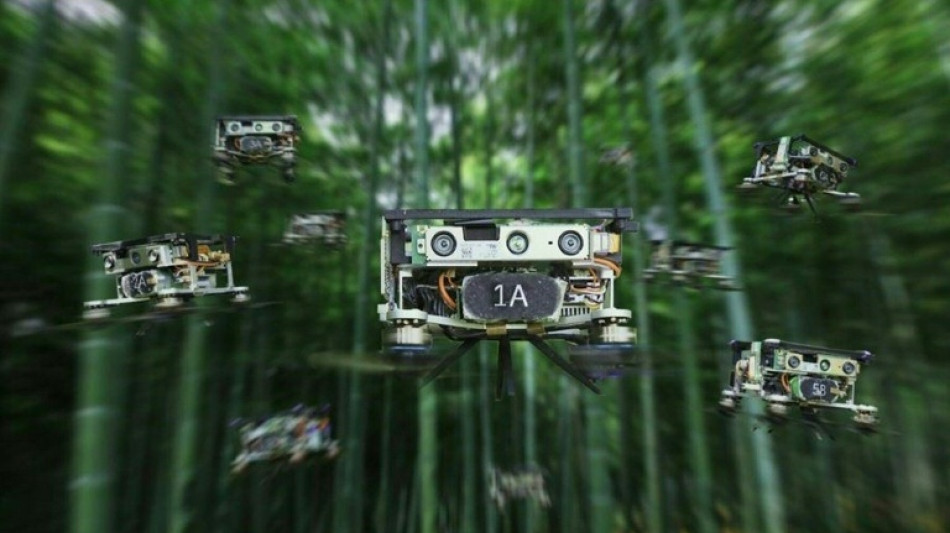
-
 Polls open in Australian vote swayed by inflation, Trump
Polls open in Australian vote swayed by inflation, Trump
-
Russell clocks second fastest 100m hurdles in history at Miami meeting

-
 Germany move against far-right AfD sets off US quarrel
Germany move against far-right AfD sets off US quarrel
-
Billionaire-owned Paris FC win promotion and prepare to take on PSG

-
 Teenager Antonelli grabs pole for Miami sprint race
Teenager Antonelli grabs pole for Miami sprint race
-
Man City climb to third as De Bruyne sinks Wolves

-
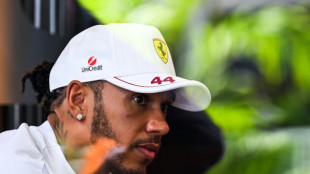 Mercedes' Wolff backs Hamilton to come good with Ferrari
Mercedes' Wolff backs Hamilton to come good with Ferrari
-
'Devastated' Prince Harry says no UK return but seeks reconciliation

-
 Elway agent death likely accidental: report
Elway agent death likely accidental: report
-
Turkish Cypriots protest new rule allowing hijab in school

-
 Germany's AfD dealt blow with right-wing extremist label
Germany's AfD dealt blow with right-wing extremist label
-
Trump NASA budget prioritizes Moon, Mars missions over research

-
 Hard-right romps through UK polls slapping aside main parties
Hard-right romps through UK polls slapping aside main parties
-
Rangers hire two-time NHL champion Sullivan as coach

-
 Haaland on bench for Man City as striker returns ahead of schedule
Haaland on bench for Man City as striker returns ahead of schedule
-
US designates two Haitian gangs as terror groups

-
 Lower profits at US oil giants amid fall in crude prices
Lower profits at US oil giants amid fall in crude prices
-
NBA icon Popovich stepping down as Spurs coach after 29 seasons

-
 'Devastated' Prince Harry says no return to UK but seeks royal reconciliation
'Devastated' Prince Harry says no return to UK but seeks royal reconciliation
-
Grande scratched from Kentucky Derby

-
 Carney vows to transform Canada economy to withstand Trump
Carney vows to transform Canada economy to withstand Trump
-
Prince Harry says he would 'love' to reconcile with family
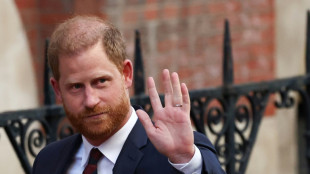
-
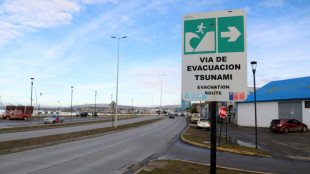 Major offshore quake causes tsunami scare in Chile, Argentina
Major offshore quake causes tsunami scare in Chile, Argentina
-
GM cuts shift at Canada plant over 'evolving trade environment'

-
 F1 extends deal to keep Miami GP until 2041
F1 extends deal to keep Miami GP until 2041
-
Popovich mixed toughness and spirit to make NBA history

-
 US asks judge to break up Google's ad tech business
US asks judge to break up Google's ad tech business
-
Trump eyes huge 'woke' cuts in budget blueprint
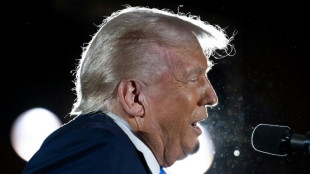
-
 Ruud downs Cerundolo to book spot in Madrid Open final
Ruud downs Cerundolo to book spot in Madrid Open final
-
Gregg Popovich stepping down as San Antonio Spurs coach after 29 seasons: team

-
 Guardiola to take break from football when he leaves Man City
Guardiola to take break from football when he leaves Man City
-
Vine escapes to Tour of Romandie 3rd stage win as Baudin keeps lead

-
 Olympic 100m medalist Kerley arrested, out of Miami Grand Slam meet
Olympic 100m medalist Kerley arrested, out of Miami Grand Slam meet
-
Chile, Argentina order evacuations over post-quake tsunami threat
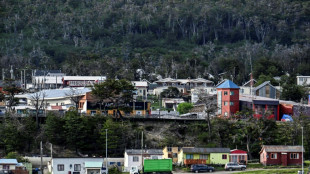
-
 Arteta 'pain' as Arsenal fall short in Premier League title race
Arteta 'pain' as Arsenal fall short in Premier League title race
-
Hard-right romps across UK local elections slapping down main parties

-
 US ends duty-free shipping loophole for low-cost goods from China
US ends duty-free shipping loophole for low-cost goods from China
-
Renewables sceptic Peter Dutton aims for Australian PM's job

-
 Australians vote in election swayed by inflation, Trump
Australians vote in election swayed by inflation, Trump
-
Syria slams Israeli Damascus strike as 'dangerous escalation'
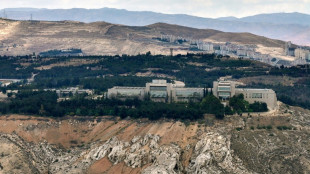
-
 Grand Theft Auto VI release postponed to May 2026
Grand Theft Auto VI release postponed to May 2026
-
Lawyers probe 'dire' conditions for Meta content moderators in Ghana

-
 Maresca confident Chelsea can close gap to Liverpool
Maresca confident Chelsea can close gap to Liverpool
-
Watchdog accuses papal contenders of ignoring sex abuse

-
 Berlin culture official quits after funding cut backlash
Berlin culture official quits after funding cut backlash
-
US hiring better than expected despite Trump uncertainty

-
 EU fine: TikTok's latest setback
EU fine: TikTok's latest setback
-
Stocks gain on US jobs data, tariff talks hopes

-
 Barca's Ter Stegen to return from long lay-off for Valladolid trip
Barca's Ter Stegen to return from long lay-off for Valladolid trip
-
US hiring slows less than expected, unemployment unchanged


China's drone carrier hints at 'swarm' ambitions for Pacific
Officially it is just a research vessel, but China's newly unveiled drone carrier is a clear sign Beijing is rushing to deploy an autonomous swarm of unmanned devices in its push for military supremacy in the Pacific Ocean.
State media last month showed the launching of the Zhu Hai Yun -- "Zhu Hai Cloud" -- capable of transporting an unspecified number of flying drones as well as surface and submarine craft, and operating autonomously thanks to artificial intelligence.
The 89-metre (292-foot) ship would be operational by year-end with a top speed of 18 knots, vastly increasing China's surveillance potential of the vast Pacific area it considers its zone of influence.
"The vessel is not only an unprecedented precision tool at the frontier of marine science, but also a platform for marine disaster prevention and mitigation, seabed precision mapping, marine environment monitoring, and maritime search and rescue," Chen Dake, lab director at the firm that built the carrier, told China Daily.
Armies worldwide see drone squadrons as key players in combat, able to overwhelm defence systems by sheer numbers and without putting soldiers' lives at risk, such as with more expensive jets or tanks.
"It's probably a first-of-its-kind development but other navies across the world, including the US Navy, are experimenting with remote warfare capabilities in the maritime domain," said US Army Lieutenant Colonel Paul Lushenko, who is also an international relations specialist at Cornell University in New York.
Even if the vessel's actual capabilities remain to be seen, Beijing is broadcasting its intent to cement territorial claims in the region, as seen with the security partnership agreed last month with the Solomon Islands northeast of Australia.
"It's definitely imposing, provocative, escalatory and aggressive," Lushenko told AFP.
- Collective intelligence -
Building fleets of autonomous and relatively inexpensive drones would greatly augment China's ability to enforce so-called anti-access and area denial (A2-AD) in the Pacific, with the aim of weakening decades of US influence.
Unlike traditional aircraft carriers or destroyers carrying hundreds of troops, the drone carrier could itself navigate for longer periods while sending out devices that create a surveillance "net," potentially able to fire missiles as well.
The Zhu Hai Yun could also improve China's mapping of the seafloor, providing a covert advantage for its submarines.
"These are capabilities that are likely to be critical in any future conflicts that China wages, including over the island of Taiwan," strategists Joseph Trevithick and Oliver Parken wrote on the influential War Zone site.
Beijing has made no secret of its desire to wrest control of Taiwan, and military experts say it is closely watching the West's response to the Russian invasion of Ukraine to gauge how and when it might make its move.
And last month, Chinese researchers published a drone swarm experiment allegedly showing 10 devices autonomously navigating a dense patch of bamboo forest, without crashing into the trees or each other.
"The ultimate goal is something that has a collective intelligence," said Jean-Marc Rickli, head of risks at the Geneva Centre for Security Policy.
"The analogy is a bit like a school of fish. They create forms in the water that are not the decision of any single fish, but the result of their collective intelligence," he told AFP.
- Game-changer -
It would be a big technological advance from current weapons, which can be programmed and semi-autonomous but must have human operators to react to unexpected challenges.
A fleet of self-navigating drones could in theory incapacitate defence systems or advancing forces by sheer numbers, saturating combat zones on land or at sea until an opponent's arsenal is depleted.
"A conventional attack becomes impossible when you're facing dozens, hundreds or thousands of devices that are much cheaper to develop and operate than heavy conventional weapons," Rickli said.
Noting this profound shift in modern warfare, a RAND Corporation study from 2020 found that while unmanned vehicles need significant improvements in onboard processing, "the overall computing capability required will be modest by modern standards -- certainly less than that of a contemporary smartphone."
"A squadron of approximately 900 personnel, properly equipped and trained, could launch and recover 300 L-CAATs every six hours, for a total of 1,200 sorties per day," it said, referring to low-cost attributable aircraft technology -- meaning devices so cheap an army can afford to lose them.
"We do have indications that China is making rapid capabilities development," Lushenko said of Beijing's new drone carrier.
"What we lack is empirical data to suggest that China's one-party state can actually employ the ship in an integrated fashion in conflict."
Y.Aukaiv--AMWN